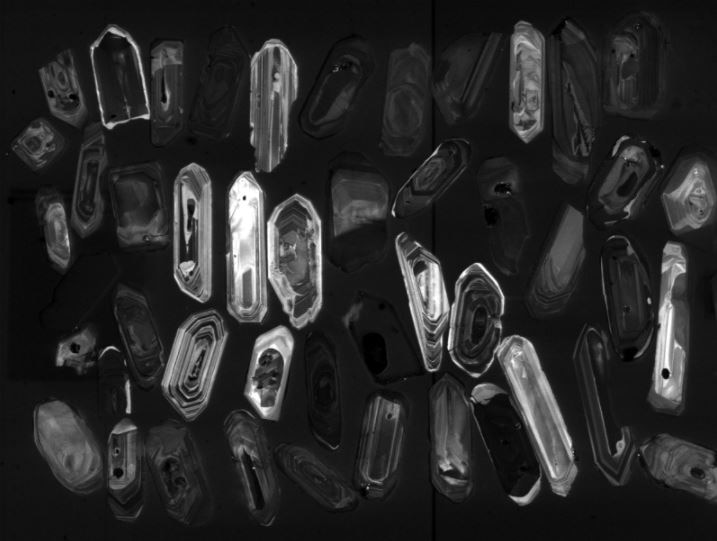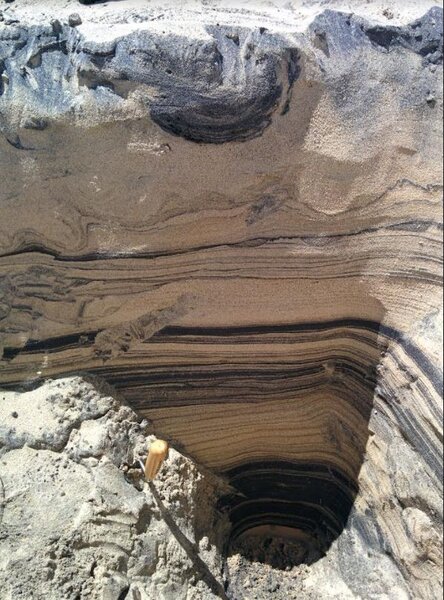Create a free profile to get unlimited access to exclusive videos, sweepstakes, and more!
Secrets of Earth’s past revealed in ancient sands of time
Suddenly, the sands in an hourglass seem a lot more important.

When we look at the Moon, we’re seeing a snapshot of it as it is, and as it has been for quite some time. The Moon is, for the most part, geologically dead. It isn’t experiencing the same kinds of erosion and tectonic activity we’re used to, allowing us to peer back into its past relatively easily. The Earth, by comparison, is cycling its surface materials all the time. Features which existed on the surface of our planet in the past are largely gone, erased from the geological record. Which means if scientists want to gain a view into the Earth’s deep past, they have to get creative.
Milo Barham from the Timescales of Mineral Systems Group and the School of Earth and Planetary Sciences at Curtin University, and colleagues, have developed a method by which they can date the age of individual grains of sand and trace them back to their source materials. Their results were published in Earth and Planetary Science Letters.
“If we want to go back in time and understand what setting a deposit was in, we can look at the age population and see if it’s all young grains or is it a range of different ages? That helps tell us how the different plates were shuffling and grinding in the past,” Barham told SYFY WIRE.
To gain a view of the past, the team visited beaches to gather sediments, looking for a specific type of mineral known as zircons. Zircons are useful for deep time aging because they incorporate both uranium and thorium into their structures, both of which are radioactive. Because scientists know the decay rate of both elements, they can then age those minerals to find out when they were created. Additionally, because zircons have both elements, each of which have different decay rates, it allows for two dating systems which can be checked against one another to validate the date.
Before they can be dated, the zircons have to be separated form the larger sediment population, something which can be difficult considering the pure number of grains present in even a handful of sand.
“We use density different. We put the sediments in this really heavy liquid which has a density of 2.7 grams per cubic centimeter. All the heavy grains sink down and all the light grains like quartz float to the top,” Barham said.
Once they’ve isolated the zircons from the sediment population, they are placed on a piece of double-sided sticky tape, covered over with resin, and polished. In this state, they can be imaged and locations of interest identified.
The aging process involves hitting the minerals with a laser which vaporizes the grains, sending the chemical information into an instrument which provides a date. Scientists focused on sediment samples gathered from beaches because they are representative of the larger geologic story.
“If you went to a little stream in the mountains and analyzed the zircons there, it’s very likely it’s going to come from the local bedrock. If you go further downstream, it has more chance to get other sources, and by the time you get to the beach it’s had a time to mix,” Barham said.
A growing database of rock samples from around the world gives scientists a reference against which to compare their individual grains. If they can match a single zircon to the age of a bedrock somewhere else in the worlds, then there’s a high degree of confidence that’s where it originally came from. Sometimes, though, they find something which doesn’t correspond to anything which still exists on the surface of the planet.
“A good example is the oldest piece of Earth that we know of, a grain of zircon in western Australia,” Barham said. “The rock it came from has been destroyed but we have this grain that’s 4.4 billion years old, representing some of the earliest activity of anything happening on Earth.”
Even while the surface of the world is crumbling away over geologic timescales, pieces of its deep history are preserved inside comparatively newer rocks, or in the sands gathering at the world’s beaches. The next time you build a sandcastle, take a moment to revel in the fact that the building blocks of your temporary construction might have existed for billions of years.



























